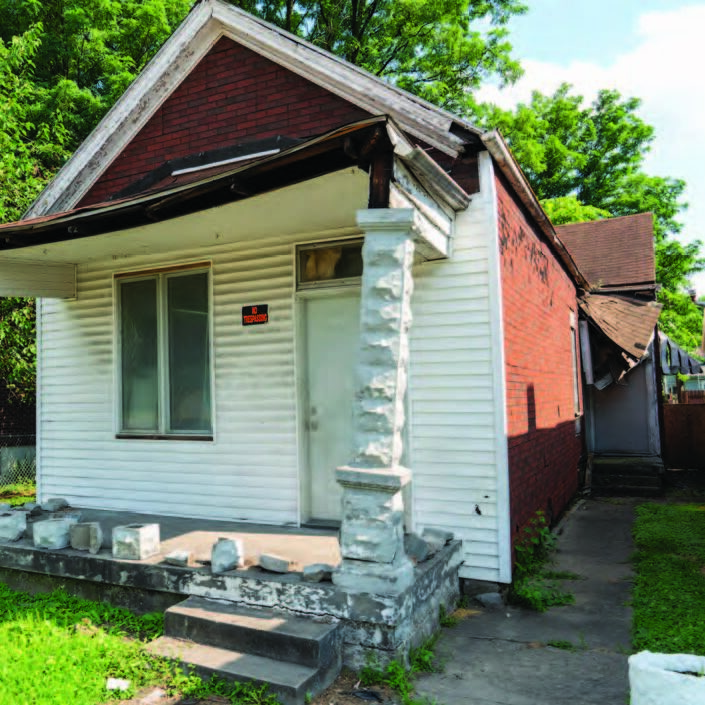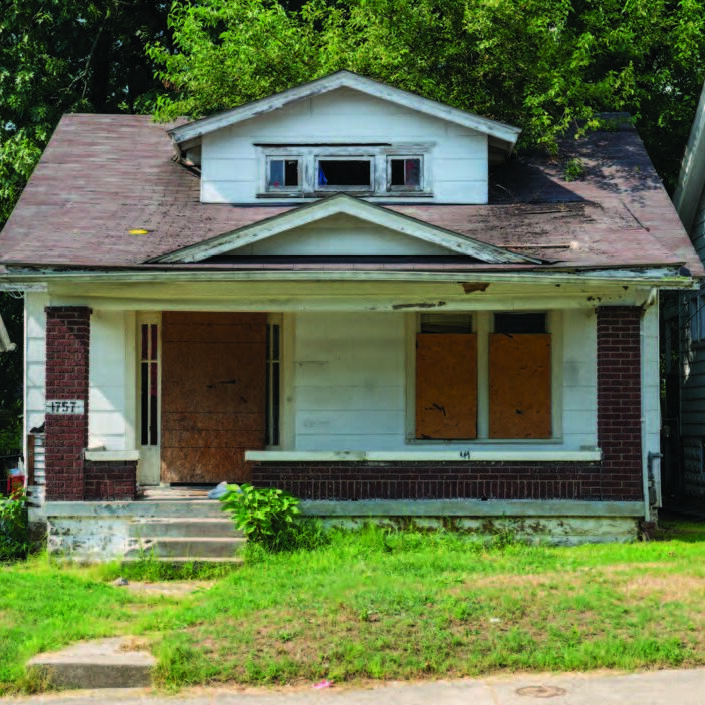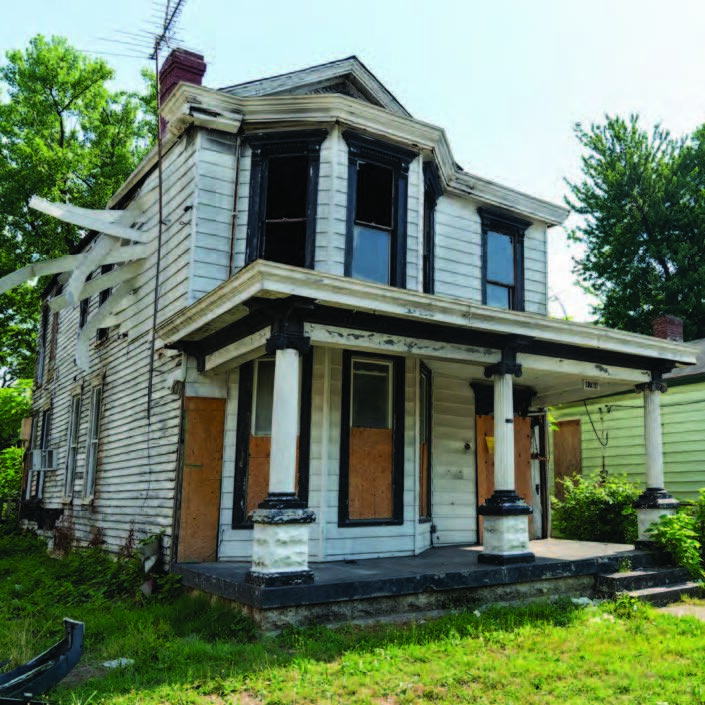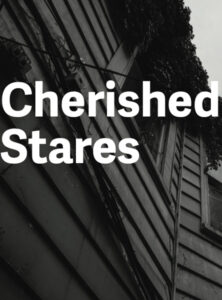Supply
in Demand
By Yasmine Jumaa and Jacob Munoz. Photos by J. Tyler Franklin
Sep 28, 2022



Star Johnson struggled to pay the rent for her Louisville apartment after her roommate moved out.
Then, the 23-year-old says, just months after she went from one apartment in southeastern Jefferson County to this new one nearby, her financial situation worsened. She caught COVID-19 in December 2021, so she missed work for a couple of weeks. She has two jobs, at a daycare and as a restaurant server, but the approximately $840 a month she owes for rent and other fees is a challenge to meet.
Johnson says she began applying for rent assistance in January 2022 through Neighborhood Place, a city program that, until this spring, offered pandemic-related rent relief. But despite being approved, she says, the aid never arrived. Around the same time, Marilyn Harris, a Louisville Metro official who oversees issues including housing, acknowledged delays in processing assistance requests.
Then in April, an eviction notice arrived. “They just couldn’t wait for the check anymore,” Johnson says. “I was a little shocked that they did that.”
When the pandemic upended our lives, the role of the home expanded — both as a sanctuary for quarantining and isolating and, for some, as a space for remote learning and working. But COVID also put pressure on people’s ability to keep the roofs over their heads amid illnesses, layoffs and other disruptions.
The Jefferson County District Court dismissed the eviction case against Johnson after a month. Her lawyer says that was due to a filing error. But Johnson still finds it difficult to keep up with rent. “I think it’s just hard for a lot of people right now, especially with the prices of everything going up,” she says, referencing soaring inflation that took hold in the first half of 2022.
Experts say Louisville has a pressing need for homes that low-to-moderate income residents can afford. And with rising housing costs since the pandemic — driven in part by more-affluent Americans’ desire for something larger, better or simply different, as well as by investors purchasing homes to rent out — some Louisvillians continue to struggle to find affordable housing. Louisville Business First reported that the average apartment rent in the city rose to almost $1,100 a month in the second quarter of 2022 (a nearly 15 percent increase in local rent prices over the past year, slightly lower than the national average of 17 percent). Until recently, hot housing markets existed in many cities, with demand outpacing supply, causing prices to jump. Financial-services company Moody’s Analytics reported that late last year, the vast majority of homes in nearly 400 metro areas of all sizes were overpriced. While Louisville fell on the lower end of that spectrum, the report found that local house prices were inflated by 15 percent. When the competition to purchase a house drives up the sale price, that affects other home values.
According to Zillow housing-market data, the average home value across Kentucky has soared since late 2020. For houses around the median price, it grew by roughly 6 percent from January 2017 to January 2018. Just four years later, from January 2021 to January 2022, it leapt by about 15 percent. (Per the Zillow data, in 2017 the average home value statewide was $128,000, compared with $186,000 in 2022.)
Kentucky law requires all homes to be reassessed in value at least once every four years. To do that in Louisville, the Jefferson County Property Value Administration, or PVA, divides the city into nine residential areas. This year, the PVA reassessed properties in three of those areas, looking at single-family homes, duplexes, condos and vacant residential land. (The survey doesn’t include apartments or other types of housing designated as commercial.) The PVA usually determines a house’s new value by comparing recent sales of similar homes nearby, among other factors. A recently renovated two-story building, for example, would be reassessed based on the sales of other updated two-story buildings in the area.
Data from the PVA shows the average reassessment across all Louisville properties rose sharply from 2017 to 2022. In the south-central part of the county, which includes the neighborhoods of Highview and Newburg, the average home reassessment jumped about 30 percent, from $124,900 to $161,990. Average reassessments in the eastern region, including Middletown, rose 26 percent, from $258,010 to $325,000. And in the northeast part of the county, which includes neighborhoods like Prospect, average home values rose 30 percent, from $234,230 to $303,970.
Higher home values typically equal higher property taxes, and this spring, residents at public meetings held in reassessed regions said they worried about being able to afford their tax bills. That’s particularly true for folks on fixed incomes, says Colleen Younger, the PVA’s administrator. She says homes that will be undergoing reassessment next year (mostly west Louisville, pending state approval) are on a similar trajectory. “In looking at what we’re doing next year in the west Louisville area,” she says, “we are already seeing extremely high increases in median sale prices.”
Compared with some of the wealthier areas reassessed in 2022, west Louisville neighborhoods today reflect the legacies of redlining and other racist housing policies that prevented Black people from making their homes across the city. Many west Louisville residents have lower incomes, lack cars and rent rather than own, meaning it’s harder for them to create and pass on wealth. Under such circumstances, increasing home values can contribute to residents being priced out of their neighborhoods. Younger says she worries residents could be displaced from their homes. She has advocated for state government to provide tax-relief measures beyond the current homestead exemption, which excludes a portion of a property’s value from the tax calculation. She wants it to be based on areas’ median sale values. For now, Kentucky’s homestead exemption is limited to people 65 and older or those considered “totally disabled.” The current exemption would knock $40,500 off a property’s taxable value.
Increased home values can hurt existing owners who have trouble paying their rising property tax bills, as well as potential buyers who have less to spend. And unless the supply of homes catches up to demand, the impact of surging values could extend to the rental market, where many of the city’s lowest-income residents are forced to compete with limited resources.
A person or family is considered able to afford their home when their living costs — mortgage or rent, plus utilities — stay within 30 percent of their annual household income. In Jefferson County, achieving that is out of reach for tens of thousands of the lowest-income residents.
According to a 2019 housing-needs assessment, the city needs more than 31,000 new units, at an estimated cost of $3.5 billion. And that’s just for households earning 30 percent or less of the area median income, or AMI, which is $84,700 for a family of four. (AMI is the midpoint of a region’s or a city’s income distribution, meaning that, if you lined up every household based on its annual earnings, the middlemost home’s income would represent the AMI.) According to the U.S. Department of Housing and Urban Development, 30 percent AMI for a family of four is currently $25,400. “If that gap was filled” — more supply — “it would essentially create a cascading effect that would then impact all the other housing shortages at every other area income level,” says Celine Mutuyemariya, a housing-justice advocate.
The current-supply picture isn’t much better for residents at 50 percent AMI. The 2019 report found a shortage of more than 22,000 units for that income bracket. On the other hand, a surplus of nearly 7,000 homes exists for those at 150 percent AMI or more.
The pandemic has further exacerbated the affordable-housing shortage, says Metropolitan Housing Coalition executive director Tony Curtis. “I think it was magnified as well,” he says, “because the need for people to stay safe and healthy at home was never more public and more visible.”
MHC, a nonprofit advocating for fair, accessible and affordable housing through research, recently released its annual report detailing the state of housing in Louisville. It set out recommendations to address the worsening affordable-housing shortage, such as the need to update the city’s Land Development Code to allow ease and leniency in the construction of multifamily and high-density housing. Another suggestion was rent control, especially in west Louisville neighborhoods where residents face the highest risk of displacement in the city. But that would require a change in state law.
According to a housing-needs assessment, the city needs more than 31,000 new units.
As of May 1, 3,323 applicants appeared on a waitlist for public-housing vouchers.
On average, people wait two to three years for a response.
Juva Barber sees a mix of factors standing in the way of future affordable-housing development. She’s the executive vice president of the Building Industry Association of Greater Louisville, a trade group for developers and contractors. She points to zoning obstacles, a shortage of vacant land, the rising cost of materials and pandemic-related supply shortages.
Then there’s the pushback against high-density housing for low-income families in some neighborhoods. These so-called NIMBY — for “not in my backyard” — residents tend to drown out supporters, Barber says. “Oftentimes, it’s the people who are opposed to the development who come to all the public meetings,” Barber says, and “not necessarily the people who need the affordable housing who come out and speak in favor of it.”
Few tools incentivize affordable-housing developments, she says. In fact, she says that, of the two offered in Jefferson County’s Land Development Code, “mixed residential development incentives” are the only ones worth the time, effort and money because they mean developers don’t have to secure a zoning change. “(You) get credits if you do certain things, some of which are higher-density housing units — you can do multifamily — as long as some of those are affordable,” Barber says.
Similar federal incentives, like the Low-Income Housing Tax Credit Program, provide builders with tax breaks to offset the cost of construction and require them to keep a portion of the housing units below market rate. But tax credits aren’t enough to make new units affordable to residents at lower income levels. Plus, the few subsidized units in these types of developments don’t make a dent in the massive need, and the cost doesn’t have to remain below market value forever. “There’s a 15- to 30-year commitment for affordability on these units,” says the MHC’s Curtis, “and once that expires, there’s no requirement that developers or owners have to keep those units affordable. They can become market-rate housing.” Over the last few years, a bipartisan effort in the Kentucky General Assembly has pushed to pass a statewide affordable-housing tax credit, without success.
Barber says it may be possible to one day reach the goal of building more than 31,000 low-income housing units. But by then, the need will have grown. “I feel like we are always going to be behind because we are still underbuilt from the 2008 recession,” she says. “We haven’t caught up from where we needed to be before.”
Racial and income discrimination are leading barriers to accessing and retaining affordable housing, says advocate Celine Mutuyemariya, who zeroes in on federal programs like subsidized housing vouchers, also known as Section 8, and eroding public-housing stock. “Those programs do not have the funding, and really the infrastructure, needed to make sure that everyone who qualifies for those programs actually has access,” she says.
Two years ago, the MHC reported that income-based vouchers contribute to areas of concentrated poverty and racial segregation because so few private landlords accept them, despite state and local laws prohibiting income-based discrimination. Data from HUD supports these claims, showing that most housing vouchers used in Louisville are concentrated in the downtown, south and west portions of the city. By contrast, few voucher-holders live in the whiter and more affluent East End. Those who do are concentrated within rural pockets. “There is a yearslong waitlist in order to access a Section 8 housing voucher, and that is for people who actually qualify,” Mutuyemariya says. “So they meet the requirements, but there are not enough…vouchers to meet the need.”
As of May 1, 3,323 applicants appeared on the waitlist for housing vouchers, according to the Louisville Metro Housing Authority. Spokesperson Jelisa Chatman says people wait two to three years on average for a response. Then, they have four months before the vouchers expire. “If they face discrimination issues that are common for folks in that population, they may lose that voucher before ever getting to utilize it,” Mutuyemariya says. “As a city, we need to stop solely relying on federal resources and think creatively about what types of local resources we can fund and support in the long term so that we are contributing to the solution.”
While the pandemic ushered in an outside-the-box approach to financial-assistance and eviction-prevention resources, state and federal relief funds are drying up. Mutuyemariya says the same goes for the momentum to implement progressive solutions. “People were willing to move quickly and really think about how to address red tape and bureaucratic issues that stand in the way of getting resources out,” she says. “We have ideas for solutions, and we have the funding. But when it comes to actually having the will to make decisions to implement solutions, I don’t think that that’s there.”
Pandemic-relief programs were difficult for residents and service providers to navigate, Mutuyemariya says. She points to a proposal last year to use coronavirus-relief funds to create a housing-stability team. It would have helped residents navigate resources like rent assistance and eviction relief. Area nonprofits like the Association of Community Ministries, the Coalition for the Homeless and the Louisville Urban League (where she worked) led the proposal, which also included initiatives to educate tenants on their rights, gather data to map available homes across the city and help people secure housing. Mutuyemariya says that, despite overwhelming support for the project from city officials and landlord associations, Louisville Metro did not fund it. She adds that city officials have certain expectations from nonprofit organizations and service providers but don’t back those up with funding. “Nonprofits just are not given the support that they need to do the work that needs to be done, which is not fair, considering how much city government relies on nonprofits to address a number of community needs,” Mutuyemariya says.
A blend of political power and lived experience is critical to meaningful change, she says. More grassroots organizations that can organize renters and encourage civic engagement around housing issues are also essential. Then, she says, “we can get elected officials in office who do have the political will to think creatively and to act with a sense of urgency and to prioritize issues that impact renters.”
The Louisville Affordable Housing Trust Fund (LAHTF) is the most substantial government answer to addressing affordable-housing barriers for low- and extremely-low-income residents.
In the current budget, city officials put aside $10 million for the LAHTF but didn’t designate how any of that should be spent. However, a city ordinance requires that half of the trust’s funding go toward creating housing opportunities for residents who earn up to 50 percent of the AMI, or an annual income of $42,350 for a family of four. The LAHTF got $10 million last year, too. It dedicated half to building housing for residents in the lowest income brackets. The remaining $5 million was reserved for building units affordable to households earning 80 percent of the AMI or below.
Christie McCravy, executive director of the LAHTF, says that barely scratches the surface. “Are we ever going to fully fund 31,000 units? It won’t happen in my lifetime,” McCravy says. “What we need to do is make sure that we don’t continue to increase that number by implementing even more barriers that will deter a developer from developing units for that population.”
McCravy says one option is to update the Land Development Code to allow for tiny homes and high-density complexes outside the urban core. “Louisville’s Land Development Code hasn’t been revised or updated for the past 40 years,” she says. “Our community, quite frankly, was built on redlining and racism.”
She adds that zoning challenges, coupled with the high cost of land, slim the prospects of building housing that’s affordable enough for the masses that need it. “Our community is really not very receptive to some of those types of housing, and for having people of all colors and socioeconomic backgrounds living in their neighborhoods,” McCravy says. “We need to just say, ‘What you’re talking about is segregating people.’”
McCravy wants more conversations about the widespread benefit of expanding the reach of affordable housing. “When all people in our community can thrive, our community thrives,” she says, “and that is the message that we need to get out to our residents.”


